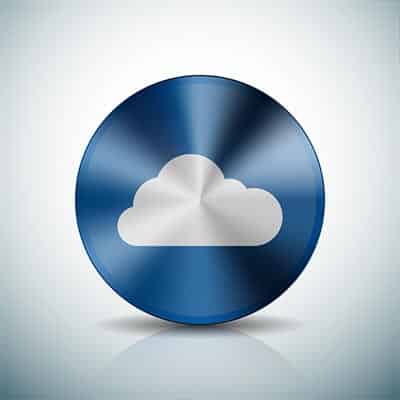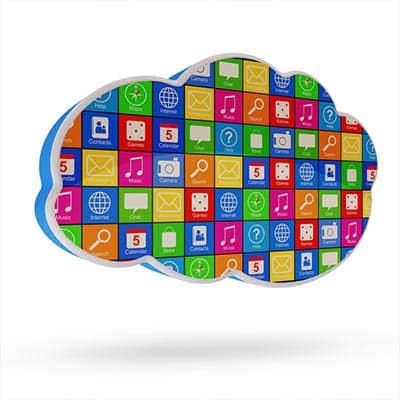First, let’s take a quick tour of the types of malware you may run into. Viruses: These act very similar to the flu virus. Once it gets into a computer, it propagates by copying itself and becoming part of another program. Then just like the flu at an elementary school, it spreads from computer to computer. However, a virus must be activated, by opening or running the file. Viruses also include worms and trojans. Spyware: This form of malware works just as its name intends. It is a software that usually piggybacks on legitimate downloads. Once it is in your computer, it spies on the information you key in and sends it to a website. The first sign of spyware usually is a slow computer since it takes up many resources to run. Adware: We all know this one all too well. Those pesky pop-ups telling you your computer is infected or that you won money. These also piggyback on other applications or downloads, such as free computer wallpaper, widgets or toolbars. Adware is kind of tricky, inherently it isn’t dangerous to your computer, annoying, but not dangerous. However, once clicked on you’ve basically opened the floodgates. Ransomware: With the popularity of cryptocurrency, ransomware has become more and more abundant. Often, this type of malware won’t damage your computer… right away. Instead it locks it and holds it hostage. The hacker asks for a ransom and will provide a key only if and once the ransom has been paid. If not, the hacker will usually wipe your device of all of its data. Botware: This is another malware beginning to gain popularity due to the cryptocurrency gold rush. Botware ultimately turns your computer into a zombie by flooding it with denial-of-service attacks. It helps hide anything going on below the surface. A surprising symptom of botware is a higher electric bill. Your computer’s CPU will be running constantly and the fan will run for longer than usual. Now that you are a bit more familiar with the mischievous malware that could corrupt your devices, it’s time to delve into a lesser known malware scam. Malvertising. This has been gaining headway on Google, so much so, they created an individual landing page asking consumers to report malvertising and explaining how to combat it. The way this works is that cyber-criminals utilize several types of display advertisements to distribute malware. A few ways you’d see malvertising is through auto-redirecting ads that will take you to a phishing page, click bait and malicious code hidden within an ad. Sadly, cybercriminals usually use legitimate ad networks because of the high volume of ads they distribute. It makes it incredibly easy for them to throw a code into an ad without the advertiser having the slightest clue. The worst malvertising connects users’ computers to an exploit kit that runs analysis on the defending computer, looking for vulnerabilities and exploiting them. From there, attackers can install malware, ransomware or gain full access to the computer and sensitive information. Sometimes Google may even flag your website for hosting malware, which will affect how you show up in search results. Like most other malware situations, the best way to keep it from ruining your device or even your life, is to keep everything up to date. It is […]
Universities rely on quite a bit of technology that enables them to function, and what we’re referring to goes beyond the productivity suites found on campus computers and the multimedia equipment educators use to spice up their lectures. Let’s review a few solutions that universities today can leverage that can bring these benefits. Degree Progress Management In order to earn their degree, each student is required to complete a litany of required courses. While each academic program will require different ones, there is no way for a student to obtain a degree without following these requirements. Many programs will offer space for elective courses, or selective courses (those which the student can choose from a list to fill a particular requirement). This system can result in some academic challenges, as students have to be that much more careful while selecting their classes (and not to take too many courses that don’t apply to their degree). Degree Progress Management solutions help to reduce the likelihood of improper scheduling, showing students and their advisors what has yet to be completed in order to complete a degree, and which classes can fill those requirements. These solutions can also accommodate other considerations, showing a student how their progress would be influenced by something like a changed major. Student Retention There’s no question that there are students who begin their collegiate experience woefully unprepared for the workload they face. Many institutions see students struggle their way back home as a result of not knowing what resources and educational supports they had access to on-campus. However, there is student retention software that enables educators to assist these students in organizing what they need to do. From appointment creation to educational to-do lists, students can find the support they need to succeed in their education and beyond. Online Learning In the past, we have relied on synchronous learning – the traditional, lecture-based approach that required both teacher and student to be present for the lesson to be delivered. With today’s technology, students are able to embrace asynchronous learning. This method allows students with less time and fewer resources to learn in an unstructured way, progressing at their own rate. This method is well-suited to online learning, where applications can be rebranded to reflect the educational organization. These educational platforms give students plenty of tools in a centralized platform, allowing them to discuss topics in message boards, access learning modules, review their grades, and to delve into additional resources. Perhaps you are a member of the educational industry, and maybe, you aren’t. Either way, we found these technologies and their applications to be worth sharing. How have you witnessed technology shaping education, or any other industry? Share your experience in the comments!
Remind Me What Disk Defragging Is Again? Disk Defragging has long been a pretty reliable way to squeeze a little bit of performance out of a slower computer, especially on computers that were going on a year or two without much maintenance otherwise. Disk Defragging works by essentially organizing your hard drive, which stores the data on your computer, at the physical level. Think of it like the card catalog system at the library; it’s easier to find a certain book when the card catalog is in proper order. Unfortunately, as your hard drive is writing and deleting data, it doesn’t always store things sequentially. A single file might exist across several areas of the physical platter on the hard drive. Hard drives spin so fast that this isn’t noticeable at a small scale, but over time it can start to take your computer longer and longer to boot up, open applications, load files, and perform other everyday tasks. Defragging Doesn’t Seem So Bad. Why Shouldn’t I Do It? On traditional mechanical hard drives, often referred to as HDDs (Hard Disk Drives), defragging wasn’t especially harmful. HDDs, although very sensitive pieces of equipment in the long run, were built in a way that they could withstand data being written, erased, and moved over and over again without wearing out the drive. Despite the delicate metal platters spinning at speeds around 72,000 RPM, they are pretty resilient to normal usage. Don’t get me wrong, HDDs will wear out over time, but typically other mechanical failures will happen before the drive wears out due to overwriting the data. In fact, we even recommend that HDDs are defragged normally depending on usage. For years, operating systems like Windows 7, 8, and even Windows 10 all have the ability to regularly defrag hard drives when the computer isn’t active, and that’s usually enough to keep a drive working efficiently. The real problem these days is that not all hard drives are mechanical HDD drives. Most modern computers, and especially laptops, have ditched their traditional HDD drives for Solid State Drives (SSD). What’s an SSD and Why Shouldn’t I Defrag It? SSDs are storage devices that, unlike HDDs, don’t contain any moving mechanical parts. The data is stored electronically. These types of drives are much faster compared to traditional mechanical drives (for years, hard drive performance was the biggest bottleneck for overall PC performance until SSDs started to become affordable for consumers). SSDs are also much more energy efficient and less prone to being damaged if they are shaken or dropped. This makes them extremely popular in laptops and ultra books. There is one downside to the improved speed, reliability, efficiency, and stability of an SSD. The cells start to deteriorate after a few thousand cycles. This actually isn’t a big deal for normal, everyday consumer usage, as it could take decades or even centuries before the cells in the drive wear out, depending on the model of SSD. That’s typical usage though. We assume a typical user isn’t flushing their entire hard drive every few days, removing all of the data and filling it back up again. The average lifespan assumes you are just accessing files normally, using applications, occasionally creating, downloading, and deleting files of various sizes, etc. Disk Defrag reads all of […]
Cloud Benefits Most applications that your business could use will have a cloud option, but rather than purchasing the solution outright, you’re buying them “as a service.” What this means is that you get full access to the application, as well as hosting, access control, and security options for protecting the data, all without having to manage or maintain the systems; you just have to pay a monthly rate that can easily fit into any budget. The traditional method of software acquisition involved purchasing licenses on an annual basis, but this prevented organizations from purchasing software in the short term. By purchasing software as a service, businesses have more freedom to try new services. Additionally, software as a service is more mobile than traditional methods of accessing solutions, as they can be used by anyone on an Internet connection. This makes it particularly useful for project management and collaboration. How to Pick Your Cloud Services You know what services your organization offers, so naturally, you want to select cloud-based services based on what your business needs. This could be anything from services that help you manage workflow, customer relations, marketing, productivity, and support. The biggest pain point to consider for all of these is the annual cost of such a service, and how it affects your budget. Are there other opportunities for your organization to improve operations? Are they lacking any tools? Any non-legacy software solution can be deployed through the cloud, so addressing your needs becomes easier in general if you know what to look for. The Cloud for Management You can centralize your management through certain Customer Relationship Management software, giving your organization more control over how it manages its customer relationships, including the management of tasks, interactions, and contacts. Professional Services Automation and Enterprise Resource Planning include CRM software to provide organizations with resources to run an entire business, from the procurement stage to distribution. The Cloud for Productivity Businesses that utilize the cloud for productivity have ways to provide scalable resources to end users in a way that gives greater control over software costs. Every organization needs a spreadsheet program, word processor, and presentation software. Cloud-hosted solutions give businesses greater control over these kinds of solutions. There might be other industry-specific software applications that are used exclusively by organizations like yours. If there isn’t a solution out there that does what you want it to, you can purchase server space and host the application on your own cloud platform–or, better yet, get a managed IT provider to handle this responsibility for you. Security Some organizations use the cloud for security to keep unwanted intruders and malware off of their network. Most businesses take advantage of local network protection, but subscribing to security services through the cloud gives you access to more dynamic solutions as a whole that are needed to guarantee systems remain safe and secure. Communications The cloud is exceptionally helpful for communication solutions. Companies are making the jump to Internet-based phone systems, cloud-hosted email, and collaboration platforms that allow for work to get done across departments. Does your company need more cloud-based resources? We can help. To learn more, reach out to SRS Networks’s IT professionals at (831) 758-3636.
Understanding How Business Computing Has Changed It wasn’t all that long ago that if you wanted to watch a movie, you needed an actual physical copy of that movie in your possession at the time. However, with the assorted streaming services available to us today for a monthly fee, all we have to do is find and access the movie we want to watch. The same can be said of television series – if there’s a particular episode you want to watch, doing so on demand has never been easier. This “Netflix Model” runs parallel to how business software has been delivered. Like was once the case of a movie, there was once no other option than to purchase a license for a particular software solution for each user that required it. The same could be said of many other business requirements – if it was needed, it needed to be purchased outright. Today, acquiring solutions for a business is more similar to the Netflix approach than it is going to a video store to pick up a copy of what you want. Why Cloud Computing is Now the Standard As you might imagine, there are quite a few reasons that companies like Adobe and Microsoft now offer their software titles via the cloud, rather than selling their customers installation codes or discs. As cloud titles, Adobe Creative Cloud and Microsoft Office 365 offer their users a few key benefits over the traditional method of software acquisition… while enjoying a few key benefits themselves at the same time. Reduced Piracy By its nature, cloud-hosted software greatly reduces the chance of software piracy, as the solution remains protected by the developer, accessed by approved users. Naturally, other developers like this idea, and are therefore motivated to offer their titles in this way as well. Reduced Requirements for Businesses A business that leverages a cloud solution will find that these solutions can help diminish their need of on-site infrastructure. Take, for instance, the email solution that comes with Microsoft Office. Once, businesses would need to invest in and maintain the equipment to host their email. Now, thanks to cloud solutions, this large financial expense can be eliminated. Reduced User Restrictions I’m sure you’ve been in this position before: you have the time to get something accomplished, but because you lack the resources to do so in the moment, the opportunity is wasted. Many cloud-based solutions can help eliminate the likelihood of this situation by allowing a user to leverage more than one device. Adobe allows their Creative Cloud users to boost their operational flexibility by utilizing two devices. Reduced Financial Toll While a user once needed to commit a large, lump expense in order to procure a software title, cloud computing’s delivery has shifted the way things are done. Now, with solutions delivered based on a regular service fee, businesses can adjust their budgets to more fluidly incorporate an operating expense, as compared to a significant, one-time charge. In this way, it makes it generally cheaper for businesses to incorporate software titles into their workflows. Which sounds better to you… $3000, up front, for one version of a software title, or a monthly fee of $25 for the latest version of that title, with updates managed by the provider? Is the Cloud […]
External ThreatsWith technology at the forefront of most businesses, external threats are becoming the benchmark for social engineers. They can hack into core business processes by manipulating people through technological means. There are so many ways for social engineers to trick people, that it is best to ensure you are well versed in some of the ways they can hack your system. BaitingFirst of all, baiting can be done both in person and online. Physical baiting would be a hacker leaving a thumb drive somewhere at a business, then an employee picks it up and plugs it into a computer. Could be curiosity, or simply thinking a co-worker left something behind. However, as soon as the thumb drive gets plugged in, it will infect your computer with malware. The online version of this could be an enticing ad, something to pique interest. Things like “Congrats, you’ve won!” Also, there is scareware, in which users are deceived to think their system is infected with malware, saying things like “Your computer has been infected, click here to start virus protection.” By clicking on it, you unintentionally downloaded malware to your computer. If you understand what you are looking for, you can usually avoid these situations. PhishingThis is probably one of the most popular social engineering attacks. Fairly generalized, this usually comes in the form of an email. Often, they ask the user to change their email, or login to check on a policy violation. Usually the email will look official and even take you to a site that looks almost identical to the one you may be used to. After that, any information you type in will we transmitted to the hacker. You just fell for the oldest online hack in the book. Spear PhishingSimilar to generic phishing, spear phishing is a more targeted scam. This does take a little more time and research for hackers to pull off, but when they do it’s hard to tell the difference. They often tailor their messages based on characteristics, job positions, and contacts belonging to their victims to make their attack less conspicuous. This could be in the form of an email, acting as the IT guy with the same signature and even cc’s to co-workers. It looks legitimate but as soon as you click the link, you are allowing malware to flood your computer. Internal ThreatsOriginally, social engineering took place in a physical setting. A hacker would do some preliminary research on a company structure or focus on behaviors in order to get that initial access into a building, server room or IT space. Once they have a “foot in the door” so to speak, obtaining pertinent data or planting malware becomes that much easier. TailgatingOften, they will enter a building without an access pass by simply acting like an employee that left it at home, this technique is known as tailgating. The only credential they need is confidence. This can also include a hacker posing as an IT person and conning people into believing that to be true so they can gain access to high-security areas. This is far easier than it sounds too. You can find company shirts at your local thrift store, exude confidence and gain access. PsychologyAnother interesting process hackers use to con their way into a business […]
Women in the Workplace There is not a level of business that women haven’t demonstrated great skills and talents in, from reliable employees, self-starting entrepreneurs, and savvy CEOs. The younger generations are also showing great initiative. Out of all the workforce growth of women between the ages of 25-to-54, 86 percent of them are between 25-and-34 years old. Furthermore, only 12.3 percentage points separate young men from young women who are either employed or seeking employment – the smallest separation ever recorded for this metric. This could be for any of a number of different reasons. More women in this range have a college degree than men in the same age group, when greater education has been shown to correlate to employment rates. In addition to this, there has been an increase in single, self-supporting mothers – which means that there are more women out there who need to provide for their families. This has all been augmented by a general hiring increase in fields that have typically been populated by women, like education and health services. Having said that, it isn’t just these industries that are hiring more women. How Other Industries, Like Construction, Have Adjusted Their Hiring Trends As of December of 2016, the construction industry had employed 93,900 women. While this only totaled around 9.1 percent of the industry as a whole, there is some evidence that suggests this percentage is on the rise. For instance, the construction industry has dawdled considerably in adopting technology to assist in day-to-day processes, but there has been an increase in this adoption as of late. More advanced technologies and other solutions are more often being used in this industry’s processes. Due to this, it only stands to reason that women, the better-educated group on average, will be better prepared to take up the jobs that require the use of these technologies. Like any other industry, the construction industry is only going to continue its shifts – both in its technology and in its staffing practices. We can help you handle the shifts in technology. For assistance in implementing the solutions that your business needs to remain competitive, give SRS Networks a call at (831) 758-3636.
Understanding IT RisksRisk balance is critical for any business, as it gives you chances to proactively prepare for issues that could pop up. Understanding these risks can help to keep risks from impacting operations in the future. If you think about the problems that could result from implementing a solution, then perhaps you can make a more educated decision about whether you actually want to implement it. How to Successfully Manage IT RisksThere are various steps involved in managing IT risks. They follow the acronym PEARS: Predict, Evaluate, Arrange, React, and Scrutinize. Predict: You need to see a risk coming if you want to prepare for it. Take a moment to think about the risks that seem most probable and when they might show up. Evaluate: After determining the risks that are most probable, take some time to estimate the impact it could have on operations. Are they major, or are they minor? Arrange: Be sure to order the risks in order of severity and priority so you can address the important ones first. This will give you a strategy to approach them. React: You now have an idea of what your risks are, but you need a plan to address them. Here are some steps to take toward this end: Avoidance: Avoiding risks isn’t the best way to approach them. You instead need to have other ways of actively preventing risky situations, as well as diffusing them. Reduction: This particular way of managing risk focuses on making decisions in which the risk is more easily managed and less impactful. Transference: If you have the opportunity to shift responsibility for the risk elsewhere, it might be worth looking into. This might be a department within your organization or outsourced to a solutions provider that would be dedicated to handling it. Acceptance: This strategy in particular means that you can’t get around the risk, but instead have to provide oversight to mitigate the risks so they can be better handled when they inevitably become a problem. Scrutinize: After the risk has passed, you need to evaluate how well the preparations handled the risk. Take note and make adjustments to better handle risk in the future. SRS Networks can help you better manage risk associated with your IT infrastructure. To learn more, reach out to us at (831) 758-3636.
A Brief History of Temporary WorkersTemporary workers and staffing agencies are nothing new. They originated in the 1950s as a way to help women who had worked during the war find jobs once the war-related ones fizzled out. Employers were able to find workers to help them manage their responsibilities, and they wouldn’t have to risk firing workers and not being able to find replacements on short notice. It also meant that employers wouldn’t have to fill out the paperwork for new hires or be responsible for employee regulations. This trend continued through the late-20th century, making employment agencies a completely normal way of finding employment. Unfortunately, this also meant that certain workers who were no longer protected by federal mandates found themselves dependent on market trends in order to find work. As these markets grew larger, there became a higher demand for workers in these markets. The Internet allowed some services to flourish, making it easier for workers to work remotely; this gave freelance professionals more opportunities to find work. There are now over 150 million workers in North America and Western Europe alone that are fulfilling their own paychecks, providing services or working as consultants. The Makeup of the Gig Economy and Why They Do ItMultiple generations of workers, including millennials, Gen Xers, and Baby Boomers take part in the gig economy. Some older workers who get laid off or suffer from medical issues find that freelancing can help them with their working issues, but millennials prioritizing a work-life balance find that the flexibility works well for their schedules. The autonomy enabled by the gig economy gives workers the ability to take employment into their own hands while they look for more traditional work (if they actually are looking). This comes with the risk of not having a regular job, which has led some gig economy workers to join placement companies who find them work. Overall, the gig economy gives talented professionals the opportunity to find work on their own terms. How Do Gig Workers Get Jobs?The Internet is the best asset a gig worker can ask for, as it gives them access to applications, website-based bids, and word of mouth. Even companies hire freelancers from time-to-time if they don’t want to onboard another salaried employee for a position. Unlike temporary work, however, the workers in the gig economy generally aren’t looking for a full-time job, which means finding a consistent worker might be more challenging than expected. Companies that rely on contracted work often find that the costs associated with temporary workers is far less than hiring full-time employees. This comes with the downside of protections for gig workers being non-existent. Thus, the importance of knowing what makes up the workforce remains, as well as understanding how your workers are being compensated. How has your business been impacted by the gig economy? Let us know in the comments.
Initial Development The very first edition of Microsoft Word was created by Charles Simonyi and Richard Brodie for Microsoft’s MS-DOS operating system. Also running on the Xenix OS, the first version of word was commissioned by Bill Gates and Paul Allen after using Xerox Bravo, a word processing software developed by Simonyi and Brodie was successful on MS-DOS previously. While initially unpopular, Microsoft’s move into a dedicated graphic user interface (GUI) with 1985’s Microsoft Windows, changed Word’s fortunes. The first GUI-enabled Word platform was released in 1990. The software quickly made up ground on Corel’s WordPerfect, which was the most popular word processor for much of the late 1980s. Since Corel failed to produce a Windows-compatible version of WordPerfect, Word was able to corner Microsoft’s market pretty quickly. It also quickly became the second most utilized word processor on Macintosh OS (behind WordPerfect). The strategy of designing software for multiple platforms led to more people using Word than any other word processing program, and has served the company well for decades. Microsoft Office As Microsoft Word’s popularity grew, Microsoft realized that companies were now looking to buy software titles, so in 1990 they paired Word 1.1 word processor, the Microsoft Excel 2.0 spreadsheet program, and the Microsoft PowerPoint 2.0 presentation builder. At the time it was the most comprehensive enterprise productivity suite on the market for both PC and Mac. Initially, one of its main competitors was called Microsoft Works. Works was also a productivity suite with a word processor, spreadsheet program, and presentation software, but it was marketed to individuals. The software wasn’t as comprehensive as the ones found in the Office suite. Works ran for 17 years, but it was finally discontinued in 2007 when Microsoft started offering the Office suite at a lower price point. With Microsoft Office adding email capabilities in July of 1991, Microsoft Office became the go-to productivity suite for the business professional. Then came a new build of Windows, Windows 3.1, which was the industry-leading OS. By outpacing its competitors with their new operating system, cache of available applications, and reasonable price point, Microsoft entrenched themselves as one of the main business software companies in the world. Word Innovation As Microsoft continued to develop and release industry-leading software, Microsoft Word started to gain features. No longer was there interoperability between the Macintosh versions and the Windows versions of Word. When Windows 95 launched, so did Word 95. No longer available for Macintosh, Word 95 was the first Word product to be developed exclusively for Windows. Word 97, introduced late in 1996, added Clippit (known as Clippy). Since there were so many options that a user could select within their Office suite, Clippy helped people navigate the new toolbars and user interface. Word was also part of the first Office suite that included product activation, which would become the standard way to license software for much of the next two decades. Word 2000 added HTML tools and the very first Internet-based collaboration features. Since there was a great deal of trepidation that software would have problems working in 2000, Microsoft was quick to release major patches, a trend that continues today. Subsequent versions of the software have made collaboration a major point of emphasis. Word In the Cloud There was a new version of […]










